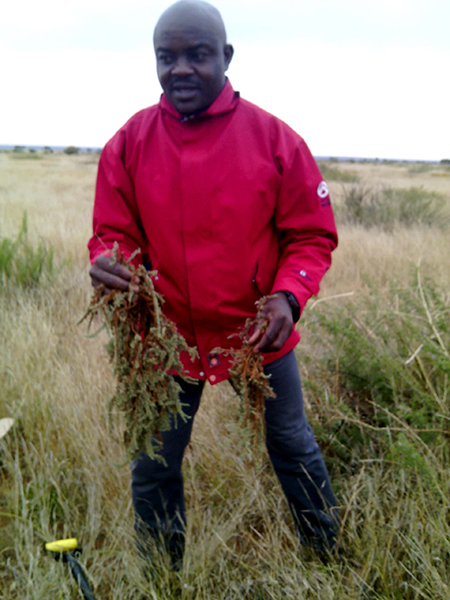Many people rely on traditional plant remedies to treat skin disorders, and now a North-West University (NWU) researcher has investigated why these plants are effective, paving the way for further research by the pharmaceutical industry.
“The use of indigenous knowledge in providing primary healthcare, especially in most indigenous African communities, is as old as human history,” says Dr John Awungnjia Asong, researcher and recent PhD graduate.
For his PhD studies he investigated the role of traditional medicine and indigenous knowledge in primary healthcare. The study aimed to explore and document indigenous knowledge and medicinal plants used for skin-related diseases. This included evaluating the pharmacological properties, phytochemistry and micro-morphological characterisation of the selected medicinal plants used by Batswana traditional health practitioners in the Ngaka Modiri Molema District Municipality in North West Province.
“The use of medicinal plants and herbal products has become the order of the day in most indigenous communities. Among the many diseases treated through this platform are skin diseases,” says Dr Asong.
“Skin diseases are the first symptoms associated with many diseases, including Aids. Although Western medications are available for treating skin diseases, many ethnic groups in South Africa still consult traditional health practitioners about these diseases.”
Dr Asong says the Batswana traditional medicine pharmacopeia has rich plant diversity and knowledge for the treatment of skin diseases. “However, these may come under threat because the young population is not showing interest in indigenous knowledge.”
New plants documented to treat skin diseases
Through this study he managed to identify and document medicinal plants used for skin diseases; the selection and preparation of extracts of the most-utilised and culturally important plants; antimicrobial evaluation of the selected plant extracts; and phytochemical and antioxidant evaluation of the plant extracts and their micro-morphological characterisation.
In an earlier interview, Dr Asong said of the 80 plants identified, 38 have never before been documented to treat skin diseases in South Africa.
“These plants have good antimicrobial agents and contain high levels of antioxidants and phytochemical compounds, some of which are currently used in the pharmaceutical industry.
“Most of the plants have the potential to be used by the pharmaceutical industry. This study has also created a platform for in-depth scientific analysis to evaluate the pharmacological efficacy and safety of the identified medicinal plants.”
Parts of this work has been published in reputable journals such as the South African Journal of Botany, the Journal of Ethnopharmacology and Plants.
Dr Asong’s research is yet more proof of the immense value of indigenous knowledge systems and the need for this knowledge to be preserved for the wellbeing of all.

Dr John Awungnjia Asong, an NWU researcher and recent PhD graduate.
